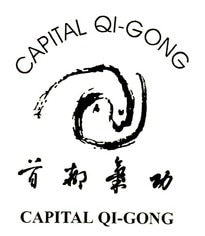UNDER CONSTRUCTION
History of our Qi-Gong style
The Roots of Traditional Qi-Gong |
Qi (Chi) is the Chinese character for air, breath, life-force, or life-essence. Gong (Kung) is the character for effort, work, or labor. Thus, Qi-Gong (or Chi-Kung ) essentially translates into “the work of harvesting one’s own life energy.”
Traditional Chinese medicine theorizes that when a person’s qi is strong and flows freely in the body, good health is maintained; when a person has weak qi, or their qi is blocked, this person will experience illness or disease. Qi-Gong helps to build strong qi and keeps it flowing freely in the body for increased health and vitality. As a person’s internal power grows, so does his/her ability to gain positive control over personal health, and at higher levels, to use internal power for the healing of others. There are numerous styles of Qi-Gong being practiced today; however, there exist effectively three traditional reasons for the practice: health, martial arts, and spirituality. Health: Proper Qi-Gong exercise will greatly improve the overall health of the practitioner; some elementary Qi-Gong styles have been invented to address specific health problems, such as indigestion, insomnia, migraines, etc. Martial Arts: Martial artists have used Qi-Gong to harness their “internal power” in complementing their pugilistic arts. Spirituality: Chinese Buddhists and Taoists have Qi-Gong methods designed for the purpose of experiencing religious enlightenment, or the Tao. Once shrouded in a veil of mystery and secrecy, Qi-Gong practice is currently experiencing a change from traditional attitudes. Expert Qi-Gong instruction was formerly accessible only within small potions of the Chinese community; the individual masters also carefully guarded their particular style and passed their arts to the few devoted students of their school. This traditional attitude has changed in the modern era, as China experienced a boom in Qi-Gong practice in the early part of the 1980’s. Qi-Gong practice became open and popular as people began to practice Qi-Gong en masse at local parks. Centers of traditional Chinese medicine also began experimenting with Qi-Gong clinics. The surge of Qi-Gong popularity is the result of an interest in Qi-Gong’s ability to not only act as a form of preventive health care, but also to cure people of certain ailments. Those interested in further reading about Qi-Gong in China may wish to read Encounters with Qi by David Eisenberg, M.D. and Healing and the Mind by Bill Moyers. However, we caution our students to consult with a Qi-Gong instructor before attempting to learn any Qi-Gong techniques from books or other media. |
You might also enjoy visiting the following websites;
- The Center of Qi Gong, Meditation, Healing and Beyond The Center of Qi Gong, Meditation, Healing and Beyond is a non religious based organization designed: to teach individuals how to reach deep relaxation/meditative states, to provide energy healing for the purpose of maintaining a good level of physical, emotional, and spiritual health, and to help speed up the recovery process in some acute or chronic somatic illnesses. The organization is committed to raising spiritual consciousness through the use of meditation. It will also conduct research on Qi Gong and Healing.
- National Center for Complementary and Alternative Medicine
- The Qigong Institute
- American Qjgong Association
- The Washington Center for Consciousness Studies
